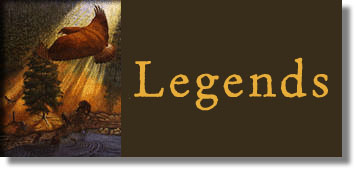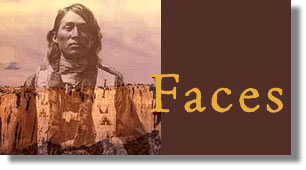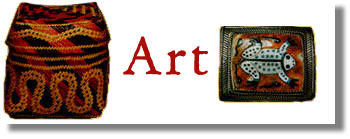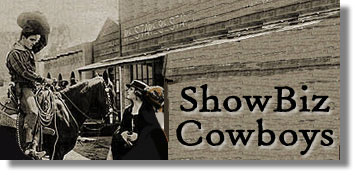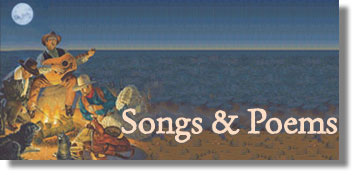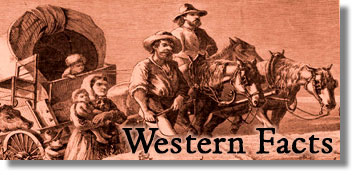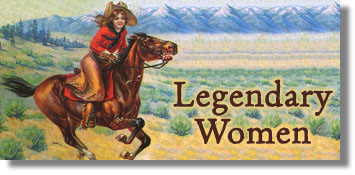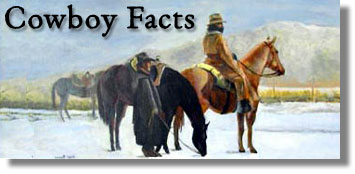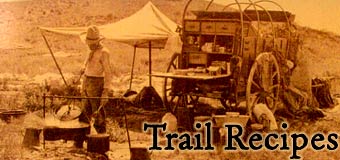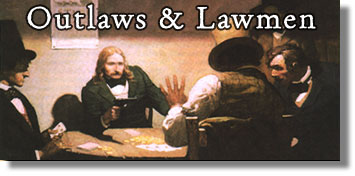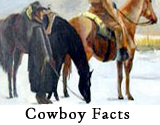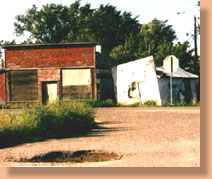
While American Indian heritage is rich in tradition and culture, many American Indian tribal members living on Indian reservations are struggling with a different legacy. More than 300,000 American Indians are either homeless or living in life-threatening conditions. American Indians are faced with a suicide rate double that of all other nonwhites, and higher levels of school dropouts, alcoholism and unemployment (e.g. 45% average, with 82% on the Rosebud Reservation). Because many American Indian reservations are located in isolated areas, much of the housing on Indian reservations lack electricity and running water.
With the reported success of Indian gaming, it might be hard to believe that nearly 50% of all American Indian families currently live below the poverty line. American Indian tribes are individual sovereign nations and have always been responsible for the needs of their people, regardless of tribal income. There are 562 federally recognized Indian tribes, and only about half operate any type of gaming business. It is just a handful of the smaller Indian tribes, like the 50-member Cabazon, and non-Indian investors, that have become the wealthy “headline making” exceptions. (Other tribes, such as the 250,000-member Navajo Nation, are not involved in gaming.)
American Indians are a proud and capable people. They are searching for ways to face the challenges of maintaining their native culture, while overcoming years of poverty. The Lakota Indians believe “Mitakuye Oyasin,” or “We are all related.”
In that vain, it is the hope of TheWildWest.org to accomplish a funding project aimed at raising needed money to offset reservations’ needs, be it food or supplies or education. We are asking for your help in whatever dollar amount you can afford. Your generosity is deeply appreciated.
Supporting Documents:
Living on the Reservation
The Wealth of Nations
Straight Talk Re: Indian Gaming
High on Gas & Out of Hope
My Grandfather Billy
Living on the Reservation
By William L. Anderson
Posted on 9/26/2006 (excerpt)
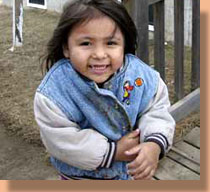 During a cross-country trip I took in early June, I drove past a number of Indian reservations in Arizona and New Mexico, and I must say that the sight was not exactly uplifting. I could see hundreds of tumble-down shacks and old trailers located on hillsides, and none of them were inviting places to live. It was obvious then that I was seeing something akin to a Third World scene with hundreds — perhaps thousands — of people living in great poverty.
During a cross-country trip I took in early June, I drove past a number of Indian reservations in Arizona and New Mexico, and I must say that the sight was not exactly uplifting. I could see hundreds of tumble-down shacks and old trailers located on hillsides, and none of them were inviting places to live. It was obvious then that I was seeing something akin to a Third World scene with hundreds — perhaps thousands — of people living in great poverty.
“About 400,000 American Indians whom live on reservations,
have the highest rates of poverty, unemployment
and disease of any ethnic group in America.”
American Indian poverty is not something on our “radar” for a couple of reasons. First, reservations are located in remote places and the largest ones are nowhere near major metropolitan areas. Second, because most Indians do not venture far from their reservations; the rest of us rarely come into personal contact with them.
Writes Peter Carlson:
Half a millennium after Columbus misnamed them, American Indians are the poorest people in the United States.
The country’s 2.1 million Indians, about 400,000 of whom live on reservations, have the highest rates of poverty, unemployment and disease of any ethnic group in America. That might surprise Americans who have consumed countless cheery feature stories about Indians making big bucks on casino gambling.
What I saw from my car window in the arid highlands of the American West did nothing to dispel what Carlson wrote. There was no doubt that I was seeing real poverty, and there seemed to be few sources of commerce in the surrounding area. It was obvious that the majority of people who lived in these hovels and broken-down trailers did not work and had no potential sources of income aside from informal tasks and government checks.
When we speak of Indian reservations, we are dealing with areas of land set aside where American Indians live, areas that supposedly have “self-government,” but are ultimately subject to the Bureau of Indian Affairs and the Indian Health Service of the US Department of the Interior. Because of their location and because of the fact that they are the ultimate welfare state, Indian reservations tend to be places where people simply exist on whatever subsidies the government provides, and little else.
Some Indian reservations offer a quality of life that’s among the poorest to be found in the United States. Shannon County, South Dakota, home of the Pine Ridge Indian Reservation, is routinely described as one of the poorest counties in the nation.
William Anderson, an adjunct scholar of the Mises Institute, teaches economics at Frostburg State University.
The Wealth of Nations
Hoover Digest 2004 No.3 Summer (excerpt)
by Terry L. Anderson and Dominic Parker
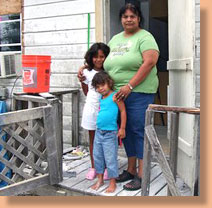
Despite recent growth partly due to gambling, per capita income for Native Americans living on reservations in 1999 was $7,846 compared to a U.S. average of $27,880. This puts reservation Indians on par with citizens in developing countries such as Palau or Oman. One hypothesis is that Indian cultures are inimical to capitalism, but this is not supported by the facts. Even after being confined to reservations, “the tradition of individual ownership was so well established that Indians resisted government efforts to establish common property,” says economist Leonard Carlson.
Another explanation for reservation poverty is that they lack high-quality natural resources. Many reservations, however, encompass hundreds of thousands of acres including valuable natural resources. For example, in the 1980s the Crow tribe had $27 billion worth of coal, or over $3 million per tribal member. Unfortunately, the asset earned a paltry 0.01 percent return, leaving 55 percent of tribal members on public assistance.
Physical and human capital are surely important to economic prosperity, but are lacking on reservations mainly because the institutions that govern Indian economies do not encourage investment. Indians cannot borrow money because their land—held in trust by the federal government—cannot be used as collateral and because tribal judicial systems may not consistently enforce contracts. Moreover, education rates lag behind the national average.
“Agricultural productivity on Indian lands is 30 to 90 percent less than
on similar private lands.”
Agricultural productivity on Indian lands is 30 to 90 percent less than on similar private lands. Furthermore, tribal judicial systems are noted for their biased decisions that discourage outsiders from contracting with tribes or individual Indians. Indeed, tribes that have relinquished their judicial authority to the states wherein they live had growth rates for 1989–99 that averaged 20 percentage points higher than tribes without equivalent state oversight. Many believe that the only hopes for pulling Native Americans out of poverty are quick fixes such as federal aid and gambling, which are not sustainable solutions, especially for rural tribes. If American Indians are to escape poverty, they will have to abandon what former interior secretary James Watt called “bastions of socialism” and commit to a rule of law with secure property rights and market institutions.
This essay was published as part of the Hoover Institution Weekly Essay series, which is distributed by Knight Ridder/Tribune, June 10, 2004.
Grabowski: Setting Bill O’Reilly straight regarding Indian Gaming
Posted: August 22, 2003 (excerpt)
by: Christine Grabowski / Indian Country Today
In the Aug. 12 broadcast of “The O’Reilly Factor,” the show’s host, Bill O’Reilly, repeatedly pushed his guest, Ernie Stevens of the National Indian Gaming Association, to “open the books” of Indian casinos. O’Reilly maintained that doing so would quell criticisms that the profits of tribally-owned casinos go to only a handful of Natives and that gaming does little to address the high rates of poverty which pervade Indian country.
Fact 1:
All Indian reservations are not created equal. While Indian country as a whole is plagued with horrendous rates of poverty, these are not uniform from reservation to reservation. Instead, they vary with the proximity of a reservation to major metropolitan centers, with the natural resources located on the land, as well as with the legal history of each reservation. Unsurprisingly, reservations which are located near thriving cities and the employment opportunities these provide generally have higher standards of living than those which do not.
Fact 2:
All Indian casinos are not created equal. Some tribally-owned casinos are economic failures, some are moderate successes, while a lucky few reap hundreds of millions of dollars or more in profits. In fact, only a handful of casinos are responsible for the lion’s share of the profits in Indian gaming. The spectacular success of the leading tribally-owned casinos derives from their geographic location and tribal histories and cannot be duplicated on the Pine Ridge Indian Reservation, no matter how brilliant the tribe’s management and how supportive the state and local governments of South Dakota.
“The BIA (Bureau of Indian Affairs) cannot account for an estimated $3 billion that the agency was supposed to have held in trust for Indian wards.”
Fact 3:
The high rate of poverty on many Indian reservations stems from an historical amalgam of federal policies which ostensibly were intended to push Indians to become “civilized,” but were chronically ill-conceived, under-funded, poorly managed, not to mention culturally insensitive. Many problems have still not been corrected. Examples abound, yet in the amount of money involved and duration, it is hard to top the Indian trust fund debacle. The BIA cannot account for an estimated $3 billion that the agency was supposed to have held in trust for Indian wards. Under court order to provide an accounting of these funds for the last 100 years, the Bureau has yet to do so. Still, the agency is racking up thousands of dollars in legal fees to explain to the court why it shouldn’t do what it is legally obligated to do.
Christine Grabowski, Ph.D. is a consultant specializing in Indian affairs.
High on Gas and Out of Hope
In Canada’s Northeast, Innu Children Take Up Deadly Addiction
By DeNeen L. Brown
Washington Post Foreign Service
Thursday, December 21, 2000
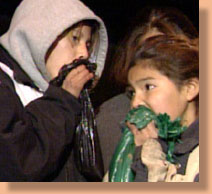
SHESHATSHEITS, Newfoundland — Standing in a dirt parking lot, ignoring anyone who stops to watch, the children wrap orange plastic bags around their blistered mouths and inhale the fumes of the clear gasoline that lies at the bottom of the bags. The bags rise and fall as the children, all Canadian native people known as Innu, suck in octane vapors.
Pien Jack is 12 and his nose is running. He stumbles as he sniffs. His tennis shoes are untied, but he doesn’t seem to notice. He giggles. Then his red eyes stare blankly, like a junkie’s. A string of saliva swings from his chin. Being a child, he does not wipe it away, and there is no parent around to do it for him.
“Alcoholism and drug abuse — including gas sniffing — are common.”
He takes another hit of fumes from the bag. It’s as if he is sucking a pacifier. But he is sucking the intoxication of gasoline stolen from a truck.
Next to him is Lizita Pone, a girl with big, brown eyes and long, brown hair. She is wearing a baby blue sweat shirt with tiny pink flowers. She is not wearing a coat despite the strong winter chill. She holds her own bag of gasoline, a black one, wrapping the plastic around her bleeding lips and nose. The bag swells and sinks, rising and falling.
She holds it as if she were blowing up a party balloon. She giggles. She stumbles.
She is 10.
Usually, Canada’s native people prefer to sort out their own social problems. Alcoholism and drug abuse — including gas sniffing — are common in Canada’s native communities, especially in the North. But things have gotten so bad with the children here that leaders of the Innu Nation of Labrador in northeastern Canada have asked government officials to come and take their children away. Round them up, all 40 or so gas sniffers, put them on a bus or in cars and take them somewhere to sweat out their addiction.
A despondent Paul Rich, chief of the Sheshatsheits Innu, said he made the call to Newfoundland health authorities the day he looked into a crowd of sniffers and saw a boy as young as 6.
“It’s very shocking to see kids holding bags in one hand and cigarettes in another,” he said. “It’s deadly. We could lose a life just like that.” He snaps his fingers.
The chief, his hair black and cropped, is talking in a cafe. He has felt a backlash from some parents who didn’t agree with going to the government. There is a sadness about him, a man caught in a cycle of community hope and community depression, without the legal power to stop something that is not against the law. Nor the standing with the children to shame them into stopping.
“There used to be five, then 10, then 15,” he muses. “Now we have up to 40 children sniffing gas.”
People ask him, why take the kids out of the community and into a non-Innu environment? The answer, he says, is that drastic measures are needed to help these kids.
Sheshatsheits is a village of 1,200 people, far from the lights of any city. It’s about 150 miles south of a place called Davis Inlet, which seven years ago got a similar dose of publicity when six glue-sniffing teenagers barricaded themselves in a shack and tried to kill themselves.
Adrian Tanner, professor of anthropology at Memorial University of Newfoundland in St. John’s, said the problems of the Innu result from what he calls a social “colonization” by European Canadians. Before 1949, when the British colony of Newfoundland and Labrador became the Canadian province of Newfoundland, the Innu lived as nomads; then the government stepped in to try to integrate them. They were unable to live according to their own values and instead had to send their children to school and live under a middle-class, European value system, Tanner said.
In the old days, children were shared among families. Children moved from place to place and were not under strict supervision of their parents. There was no need to be.
The Innu culture does not allow for punishment of children. “There’s a notion among the Innu that children and young people have to discover for themselves. That worked in the bush, but unfortunately that doesn’t work as well” in modern times. Tanner called the gas sniffing a symptom of social breakdown. “It is a breakdown of rules that worked in the bush.”
Today about 75 percent of the adults in this community suffer from alcoholism and live in poverty. “There’s an atmosphere of hopelessness that the children must sense from their own parents. . . . So there’s this self-destructiveness that becomes very early on a dominant theme in the children’s approach to life,” he said.
Peter Penashue, president of the Innu Nation, said the blame for the Innu’s problems lies with Canada. It stripped the Innu of their culture starting in 1949. In the years that followed, many Innu lost their balance, he said: “Some of us lost pride and self-image; some tried to drown our sorrows in the bottle. And, yes, some of us, because of our drinking, neglected our children, so they followed our example and engaged in self-abuse such as gas sniffing.”
“He looked into a crowd of sniffers
and saw a boy as young as 6.”
Alcohol’s Cruel Legacy
In the early days of the epidemic, children in this village hid in the woods, where they built a shelter out of plywood. They would sniff gas all day and all night, sleeping in the woods and forgetting about school. No one looked for them, not even their parents, who were often wrestling with addictions to alcohol.
But now they walk openly down gravel roads, holding their bags, fearless and blatant, wanting the constant high that makes them hallucinate, makes them forget their problems, they say.
More often they say nothing at all.
A great orange moon hangs next to the Northern Lights in the sky over Sheshatsheits. “It is a strange moon,” Rich says as he drives down the highway. It seems to illuminate only problems. The chief points to a place where a man, drunk, was fatally hit. He tells how his own father, drunk, bled to death after he put his hand through a window and cut an artery, and how his mother, drunk, walked off a bridge.
“At least that is what they tell me,” Rich said. “I was 7.” He was placed in a foster home, where he was told not to speak his native language.
He pulls into the dirt parking lot of the alcohol rehabilitation center, a building painted midnight blue, set up to aid alcoholics, but now used in efforts to make sure the children at least have food and a place to sleep. Eight of them are sitting on a picnic bench outside. It is 11:30 on a Friday night and they are sniffing gas. They make no effort to hide the gas bags from the chief.
He approaches them and in a kind voice tells them there is food and shelter in the center. They giggle and twist their bags so the gas won’t spill, then place them in neat lines in the dirt near the center’s foundation wall. They go up the wooden stairs and into the center.
The scent of gasoline follows them inside, the way a chill rides the sleeve of someone who has stepped in out of the cold. They smell like mechanics. They giggle, dizzy.
Brendon Rich, 16, the chief’s nephew, slathers mayonnaise on white bread, then adds cheese and two pieces of bologna. He wolfs down half the sandwich, then runs outside to sniff, not stopping to savor the taste of mayonnaise mixed with gasoline fumes.
Outside, a girl is saying her name is Isabelle. She is almost singing the syllables. “Sleep? I don’t sleep. I never sleep.” Her eyes are blank, her eyebrows shaved, her dark hair lightened at the roots. She would be pretty except for the glaze over her eyes. She inhales from the bag and blows out. The black bag rises and falls like a hospital breathing device. She spits and giggles. The gas makes everything funny.
Why do you sniff gas when it could cause permanent brain damage?
They all giggle. “Because I like it,” a boy says.”Hasta la vista, baby,” he says, dancing.
Irene Penunzi, 19, one of the oldest in the group, sits on a white rail fence. “I started sniffing four years ago,” she says. “I have lots of problems. I don’t want to think about my problems. I keep it inside.”
Irene’s face is full, but her body is rail-thin. Her eyes speak. “Treatment?” she asks. “I want treatment.”
A 9-year-old girl stands at the edge of the crowd. This is my sister, a boy says. She sniffs gasoline, too,” he says proudly.
“I sniff sometimes,” the girl says, as if reciting something she’s memorized.
Finally, it’s all too much for someone who’s seeing this for the first time.
Please don’t sniff the gas. Here is some bubble gum. Do you like bubble gum?
They nod. They press forward with their hands stretching out. They jump up and down for the gum. They are children first. They ask: “Do you have candy?”
Yes. Here is candy. Have more. Please don’t sniff the gas. Don’t you know what that does to your brains?
They answer with blank stares.
Sympathy at the Top
Millions of Canadians have seen faces like these. Innu children have shown up on TV news in recent days, the latest evidence of the historic mismatch between European Canada and the country’s native peoples. It is a problem some Canadians are tired of hearing about, a problem others say makes them ashamed to be Canadians.
“They should not be poor,” said a non-native man in Quebec who did not want to be identified. “They live on reservations in government-funded housing. They don’t have to pay taxes. They should have plenty of money. Their parents are high on booze. Why aren’t they watching those children?”
But elsewhere there is sympathy. A day before Canada’s national election in November, Innu leaders met with Prime Minister Jean Chretien, a former Indian affairs minister who has an adopted native son. He appeared moved by their plea to take the children in hand. “Too many children live in poverty. Too many aboriginal Canadians live in Third World conditions,” Chretien said in a speech recently. “I deeply believe that government has the responsibility to promote social justice.”
On Nov. 22, social workers responded to the pleas of the Innu Nation. They took 12 children on a bus to a detoxification center hastily created on a military base in Happy Valley-Goose Bay. Welfare officials had obtained court orders to remove 19 children from the village, but seven couldn’t be found.
Dark End of the Graveyard
On a Saturday morning, the children emerge from the woods, where some of them have slept in the cold. Their breakfast of gasoline in their hands, they head for the alcohol center to eat food as well. On the way, they talk of why they sniff gas and they talk about Charles. Eight months ago, he died at the age of 11 in a fire started by a cigarette after he sniffed gas.
Four kids were in the house with Charles when his bag — and he — caught on fire.
“At one point Charles ran toward me. I was still sniffing and fumes were on me,” said Phillip Rich, 13. He wears a blue knit hat with a Reebok label. “I thought I would catch fire so I ran away.”
Charles’s death haunts Phillip. He appears in fume-fueled dreams. “Charles told me to go to the dark end of the graveyard,” Phillip said.
Phillip said he tried to stop sniffing gas but couldn’t. “I won’t stop because that is the only way I can communicate with Charles.”
He wraps his orange bag tighter. He inhales. Exhales. The bag swells.
My Grandfather William “Billy” Keith
The idea “Billy’s Dream for American Indian Families” was first told to me by my grandfather William Keith for which this website is dedicated. Billy didn’t start talking to me about his American Indian heritage until I was a young man serving in the military. In fact, I was quite surprised when he told me he was a member of the Cherokee Nation. It was through him that I began to learn of the culture and wisdom of the American Indian. He told me he purposely used the term American Indian from time to time because he did not find it “offensive” in the least. And after all, many of the organizations and tribes have the word “Indian” in their title. He believed that our attention would be better served by concentrating on the positive aspects that the American Indian had contributed to this world.
Billy was a very hard working man. In fact, he had worked for Lockheed for over 40 years. He was also a very giving man. Any time any one in the family needed help, financially or otherwise, he has there. No one ever had to ask him twice for help. Once was always enough. Billy and his wife, Ruthie, lived in a small two bedroom house which was always enough to serve their needs. He spent most of the time in the garage which was filled with tools and machines that he could use for just about any kind of project. He was great, not only with his hands, but with his mind, which means he could come up with an idea, develop the necessary blueprints and then actually create the finished product.
I’ve incorporated some of the stories and wisdom that my grandfather Billy told me over the years onto the pages of this website. I will be adding to the history of William “Billy” Keith from time to time.
While Native American Indian heritage is rich in tradition and culture, many Native American tribal members living on Indian reservations are struggling with a different legacy. More than 300,000 Native Americans are either homeless or living in life-threatening conditions. American Indians are faced with a suicide rate double that of all other nonwhites, and higher levels of school dropouts, alcoholism and unemployment (e.g. 45% average, with 82% on the Rosebud Reservation). Because many Native American reservations are located in isolated areas, much of the housing on Indian reservations lack electricity and running water.
With the reported success of Indian gaming, it might be hard to believe that nearly 50% of all American Indian families currently live below the poverty line. Native Indian tribes are individual sovereign nations and have always been responsible for the needs of their people, regardless of tribal income. There are 562 federally recognized Indian tribes, and only about half operate any type of gaming business. It is just a handful of the smaller Indian tribes, like the 50-member Cabazon, and non-Indian investors, that have become the wealthy “headline making” exceptions. (Other tribes, such as the 250,000-member Navajo Nation, are not involved in gaming.)
Native American Indians are a proud and capable people. They are searching for ways to face the challenges of maintaining their native culture, while overcoming years of poverty. The Lakota Indians believe “Mitakuye Oyasin,” or “We are all related.”
In that vain, it is the hope of TheWildWest.org to accomplish a funding project aimed at raising needed money to offset reservations’ needs, be it food or supplies or education. We are asking for your help in whatever dollar amount you can afford. Your generosity is deeply appreciated.
Supporting Documents:
Living on the Reservation
By William L. Anderson
Posted on 9/26/2006 (excerpt)

During a cross-country trip I took in early June, I drove past a number of Indian reservations in Arizona and New Mexico, and I must say that the sight was not exactly uplifting. I could see hundreds of tumble-down shacks and old trailers located on hillsides, and none of them were inviting places to live. It was obvious then that I was seeing something akin to a Third World scene with hundreds — perhaps thousands — of people living in great poverty.
“About 400,000 American Indians whom live on reservations,
have the highest rates of poverty, unemployment
and disease of any ethnic group in America.”
American Indian poverty is not something on our “radar” for a couple of reasons. First, reservations are located in remote places and the largest ones are nowhere near major metropolitan areas. Second, because most Indians do not venture far from their reservations; the rest of us rarely come into personal contact with them.
Writes Peter Carlson:
Half a millennium after Columbus misnamed them, American Indians are the poorest people in the United States.
The country’s 2.1 million Indians, about 400,000 of whom live on reservations, have the highest rates of poverty, unemployment and disease of any ethnic group in America. That might surprise Americans who have consumed countless cheery feature stories about Indians making big bucks on casino gambling.
What I saw from my car window in the arid highlands of the American West did nothing to dispel what Carlson wrote. There was no doubt that I was seeing real poverty, and there seemed to be few sources of commerce in the surrounding area. It was obvious that the majority of people who lived in these hovels and broken-down trailers did not work and had no potential sources of income aside from informal tasks and government checks.
When we speak of Indian reservations, we are dealing with areas of land set aside where American Indians live, areas that supposedly have “self-government,” but are ultimately subject to the Bureau of Indian Affairs and the Indian Health Service of the US Department of the Interior. Because of their location and because of the fact that they are the ultimate welfare state, Indian reservations tend to be places where people simply exist on whatever subsidies the government provides, and little else.
Some Indian reservations offer a quality of life that’s among the poorest to be found in the United States. Shannon County, South Dakota, home of the Pine Ridge Indian Reservation, is routinely described as one of the poorest counties in the nation.
William Anderson, an adjunct scholar of the Mises Institute, teaches economics at Frostburg State University.
Hoover Digest 2004 No.3 Summer (excerpt)
by Terry L. Anderson and Dominic Parker

Despite recent growth partly due to gambling, per capita income for Native Americans living on reservations in 1999 was $7,846 compared to a U.S. average of $27,880. This puts reservation Indians on par with citizens in developing countries such as Palau or Oman. One hypothesis is that Indian cultures are inimical to capitalism, but this is not supported by the facts. Even after being confined to reservations, “the tradition of individual ownership was so well established that Indians resisted government efforts to establish common property,” says economist Leonard Carlson.
Another explanation for reservation poverty is that they lack high-quality natural resources. Many reservations, however, encompass hundreds of thousands of acres including valuable natural resources. For example, in the 1980s the Crow tribe had $27 billion worth of coal, or over $3 million per tribal member. Unfortunately, the asset earned a paltry 0.01 percent return, leaving 55 percent of tribal members on public assistance.
high-quality natural resources. Many reservations, however, encompass hundreds of thousands of acres including valuable natural resources. For example, in the 1980s the Crow tribe had $27 billion worth of coal, or over $3 million per tribal member. Unfortunately, the asset earned a paltry 0.01 percent return, leaving 55 percent of tribal members on public assistance.
Physical and human capital are surely important to economic prosperity, but are lacking on reservations mainly because the institutions that govern Indian economies do not encourage investment. Indians cannot borrow money because their land—held in trust by the federal government—cannot be used as collateral and because tribal judicial systems may not consistently enforce contracts. Moreover, education rates lag behind the national average.
“Agricultural productivity on Indian lands
is 30 to 90 percent less than
on similar private lands.”
Agricultural productivity on Indian lands is 30 to 90 percent less than on similar private lands. Furthermore, tribal judicial systems are noted for their biased decisions that discourage outsiders from contracting with tribes or individual Indians. Indeed, tribes that have relinquished their judicial authority to the states wherein they live had growth rates for 1989–99 that averaged 20 percentage points higher than tribes without equivalent state oversight. Many believe that the only hopes for pulling Native Americans out of poverty are quick fixes such as federal aid and gambling, which are not sustainable solutions, especially for rural tribes. If American Indians are to escape poverty, they will have to abandon what former interior secretary James Watt called “bastions of socialism” and commit to a rule of law with secure property rights and market institutions.
This essay was published as part of the Hoover Institution Weekly Essay series, which is distributed by Knight Ridder/Tribune, June 10, 2004.
Grabowski: Setting Bill O’Reilly straight regarding Indian Gaming
Posted: August 22, 2003 (excerpt)
by: Christine Grabowski / Indian Country Today
In the Aug. 12 broadcast of “The O’Reilly Factor,” the show’s host, Bill O’Reilly, repeatedly pushed his guest, Ernie Stevens of the National Indian Gaming Association, to “open the books” of Indian casinos. O’Reilly maintained that doing so would quell criticisms that the profits of tribally-owned casinos go to only a handful of Natives and that gaming does little to address the high rates of poverty which pervade Indian country.
Fact 1:
All Indian reservations are not created equal. While Indian country as a whole is plagued with horrendous rates of poverty, these are not uniform from reservation to reservation. Instead, they vary with the proximity of a reservation to major metropolitan centers, with the natural resources located on the land, as well as with the legal history of each reservation. Unsurprisingly, reservations which are located near thriving cities and the employment opportunities these provide generally have higher standards of living than those which do not.
Fact 2:
All Indian casinos are not created equal. Some tribally-owned casinos are economic failures, some are moderate successes, while a lucky few reap hundreds of millions of dollars or more in profits. In fact, only a handful of casinos are responsible for the lion’s share of the profits in Indian gaming. The spectacular success of the leading tribally-owned casinos derives from their geographic location and tribal histories and cannot be duplicated on the Pine Ridge Indian Reservation, no matter how brilliant the tribe’s management and how supportive the state and local governments of South Dakota.
“The BIA (Bureau of Indian Affairs) cannot account
for an estimated $3 billion that the agency was
supposed to have held in trust for Indian wards.”
Fact 3:
The high rate of poverty on many Indian reservations stems from an historical amalgam of federal policies which ostensibly were intended to push Indians to become “civilized,” but were chronically ill-conceived, under-funded, poorly managed, not to mention culturally insensitive. Many problems have still not been corrected. Examples abound, yet in the amount of money involved and duration, it is hard to top the Indian trust fund debacle. The BIA cannot account for an estimated $3 billion that the agency was supposed to have held in trust for Indian wards. Under court order to provide an accounting of these funds for the last 100 years, the Bureau has yet to do so. Still, the agency is racking up thousands of dollars in legal fees to explain to the court why it shouldn’t do what it is legally obligated to do.
federal policies which ostensibly were intended to push Indians to become “civilized,” but were chronically ill-conceived, under-funded, poorly managed, not to mention culturally insensitive. Many problems have still not been corrected. Examples abound, yet in the amount of money involved and duration, it is hard to top the Indian trust fund debacle. The BIA cannot account for an estimated $3 billion that the agency was supposed to have held in trust for Indian wards. Under court order to provide an accounting of these funds for the last 100 years, the Bureau has yet to do so. Still, the agency is racking up thousands of dollars in legal fees to explain to the court why it shouldn’t do what it is legally obligated to do.
Christine Grabowski, Ph.D. is a consultant specializing in Indian affairs.
High on Gas and Out of Hope
In Canada’s Northeast, Innu Children Take Up Deadly Addiction
By DeNeen L. Brown
Washington Post Foreign Service
Thursday, December 21, 2000

SHESHATSHEITS, Newfoundland — Standing in a dirt parking lot, ignoring anyone who stops to watch, the children wrap orange plastic bags around their blistered mouths and inhale the fumes of the clear gasoline that lies at the bottom of the bags. The bags rise and fall as the children, all Canadian native people known as Innu, suck in octane vapors.
Pien Jack is 12 and his nose is running. He stumbles as he sniffs. His tennis shoes are untied, but he doesn’t seem to notice. He giggles. Then his red eyes stare blankly, like a junkie’s. A string of saliva swings from his chin. Being a child, he does not wipe it away, and there is no parent around to do it for him.
“Alcoholism and drug abuse —
including gas sniffing — are common.”
He takes another hit of fumes from the bag. It’s as if he is sucking a pacifier. But he is sucking the intoxication of gasoline stolen from a truck.
Next to him is Lizita Pone, a girl with big, brown eyes and long, brown hair. She is wearing a baby blue sweat shirt with tiny pink flowers. She is not wearing a coat despite the strong winter chill. She holds her own bag of gasoline, a black one, wrapping the plastic around her bleeding lips and nose. The bag swells and sinks, rising and falling.
She holds it as if she were blowing up a party balloon. She giggles. She stumbles.
She is 10.
Usually, Canada’s native people prefer to sort out their own social problems. Alcoholism and drug abuse — including gas sniffing — are common in Canada’s native communities, especially in the North. But things have gotten so bad with the children here that leaders of the Innu Nation of Labrador in northeastern Canada have asked government officials to come and take their children away. Round them up, all 40 or so gas sniffers, put them on a bus or in cars and take them somewhere to sweat out their addiction.
A despondent Paul Rich, chief of the Sheshatsheits Innu, said he made the call to Newfoundland health authorities the day he looked into a crowd of sniffers and saw a boy as young as 6.
“It’s very shocking to see kids holding bags in one hand and cigarettes in another,” he said. “It’s deadly. We could lose a life just like that.” He snaps his fingers.
The chief, his hair black and cropped, is talking in a cafe. He has felt a backlash from some parents who didn’t agree with going to the government. There is a sadness about him, a man caught in a cycle of community hope and community depression, without the legal power to stop something that is not against the law. Nor the standing with the children to shame them into stopping.
“There used to be five, then 10, then 15,” he muses. “Now we have up to 40 children sniffing gas.”
People ask him, why take the kids out of the community and into a non-Innu environment? The answer, he says, is that drastic measures are needed to help these kids.
Sheshatsheits is a village of 1,200 people, far from the lights of any city. It’s about 150 miles south of a place called Davis Inlet, which seven years ago got a similar dose of publicity when six glue-sniffing teenagers barricaded themselves in a shack and tried to kill themselves.
Adrian Tanner, professor of anthropology at Memorial University of Newfoundland in St. John’s, said the problems of the Innu result from what he calls a social “colonization” by European Canadians. Before 1949, when the British colony of Newfoundland and Labrador became the Canadian province of Newfoundland, the Innu lived as nomads; then the government stepped in to try to integrate them. They were unable to live according to their own values and instead had to send their children to school and live under a middle-class, European value system, Tanner said.
said the problems of the Innu result from what he calls a social “colonization” by European Canadians. Before 1949, when the British colony of Newfoundland and Labrador became the Canadian province of Newfoundland, the Innu lived as nomads; then the government stepped in to try to integrate them. They were unable to live according to their own values and instead had to send their children to school and live under a middle-class, European value system, Tanner said.
In the old days, children were shared among families. Children moved from place to place and were not under strict supervision of their parents. There was no need to be.
The Innu culture does not allow for punishment of children. “There’s a notion among the Innu that children and young people have to discover for themselves. That worked in the bush, but unfortunately that doesn’t work as well” in modern times. Tanner called the gas sniffing a symptom of social breakdown. “It is a breakdown of rules that worked in the bush.”
Today about 75 percent of the adults in this community suffer from alcoholism and live in poverty. “There’s an atmosphere of hopelessness that the children must sense from their own parents. . . . So there’s this self-destructiveness that becomes very early on a dominant theme in the children’s approach to life,” he said.
Peter Penashue, president of the Innu Nation, said the blame for the Innu’s problems lies with Canada. It stripped the Innu of their culture starting in 1949. In the years that followed, many Innu lost their balance, he said: “Some of us lost pride and self-image; some tried to drown our sorrows in the bottle. And, yes, some of us, because of our drinking, neglected our children, so they followed our example and engaged in self-abuse such as gas sniffing.”
“He looked into a crowd of sniffers
and saw a boy as young as 6.”
Alcohol’s Cruel Legacy
In the early days of the epidemic, children in this village hid in the woods, where they built a shelter out of plywood. They would sniff gas all day and all night, sleeping in the woods and forgetting about school. No one looked for them, not even their parents, who were often wrestling with addictions to alcohol.
But now they walk openly down gravel roads, holding their bags, fearless and blatant, wanting the constant high that makes them hallucinate, makes them forget their problems, they say.
More often they say nothing at all.
A great orange moon hangs next to the Northern Lights in the sky over Sheshatsheits. “It is a strange moon,” Rich says as he drives down the highway. It seems to illuminate only problems. The chief points to a place where a man, drunk, was fatally hit. He tells how his own father, drunk, bled to death after he put his hand through a window and cut an artery, and how his mother, drunk, walked off a bridge.
“At least that is what they tell me,” Rich said. “I was 7.” He was placed in a foster home, where he was told not to speak his native language.
He pulls into the dirt parking lot of the alcohol rehabilitation center, a building painted midnight blue, set up to aid alcoholics, but now used in efforts to make sure the children at least have food and a place to sleep. Eight of them are sitting on a picnic bench outside. It is 11:30 on a Friday night and they are sniffing gas. They make no effort to hide the gas bags from the chief.
He approaches them and in a kind voice tells them there is food and shelter in the center. They giggle and twist their bags so the gas won’t spill, then place them in neat lines in the dirt near the center’s foundation wall. They go up the wooden stairs and into the center.
The scent of gasoline follows them inside, the way a chill rides the sleeve of someone who has stepped in out of the cold. They smell like mechanics. They giggle, dizzy.
Brendon Rich, 16, the chief’s nephew, slathers mayonnaise on white bread, then adds cheese and two pieces of bologna. He wolfs down half the sandwich, then runs outside to sniff, not stopping to savor the taste of mayonnaise mixed with gasoline fumes.
Outside, a girl is saying her name is Isabelle. She is almost singing the syllables. “Sleep? I don’t sleep. I never sleep.” Her eyes are blank, her eyebrows shaved, her dark hair lightened at the roots. She would be pretty except for the glaze over her eyes. She inhales from the bag and blows out. The black bag rises and falls like a hospital breathing device. She spits and giggles. The gas makes everything funny.
Why do you sniff gas when it could cause permanent brain damage?
They all giggle. “Because I like it,” a boy says.”Hasta la vista, baby,” he says, dancing.
Irene Penunzi, 19, one of the oldest in the group, sits on a white rail fence. “I started sniffing four years ago,” she says. “I have lots of problems. I don’t want to think about my problems. I keep it inside.”
Irene’s face is full, but her body is rail-thin. Her eyes speak. “Treatment?” she asks. “I want treatment.”
A 9-year-old girl stands at the edge of the crowd. This is my sister, a boy says. She sniffs gasoline, too,” he says proudly.
“I sniff sometimes,” the girl says, as if reciting something she’s memorized.
Finally, it’s all too much for someone who’s seeing this for the first time.
Please don’t sniff the gas. Here is some bubble gum. Do you like bubble gum?
They nod. They press forward with their hands stretching out. They jump up and down for the gum. They are children first. They ask: “Do you have candy?”
Yes. Here is candy. Have more. Please don’t sniff the gas. Don’t you know what that does to your brains?
They answer with blank stares.
Sympathy at the Top
Millions of Canadians have seen faces like these. Innu children have shown up on TV news in recent days, the latest evidence of the historic mismatch between European Canada and the country’s native peoples. It is a problem some Canadians are tired of hearing about, a problem others say makes them ashamed to be Canadians.
“They should not be poor,” said a non-native man in Quebec who did not want to be identified. “They live on reservations in government-funded housing. They don’t have to pay taxes. They should have plenty of money. Their parents are high on booze. Why aren’t they watching those children?”
But elsewhere there is sympathy. A day before Canada’s national election in November, Innu leaders met with Prime Minister Jean Chretien, a former Indian affairs minister who has an adopted native son. He appeared moved by their plea to take the children in hand. “Too many children live in poverty. Too many aboriginal Canadians live in Third World conditions,” Chretien said in a speech recently. “I deeply believe that government has the responsibility to promote social justice.”
On Nov. 22, social workers responded to the pleas of the Innu Nation. They took 12 children on a bus to a detoxification center hastily created on a military base in Happy Valley-Goose Bay. Welfare officials had obtained court orders to remove 19 children from the village, but seven couldn’t be found.
Dark End of the Graveyard
On a Saturday morning, the children emerge from the woods, where some of them have slept in the cold. Their breakfast of gasoline in their hands, they head for the alcohol center to eat food as well. On the way, they talk of why they sniff gas and they talk about Charles. Eight months ago, he died at the age of 11 in a fire started by a cigarette after he sniffed gas.
Four kids were in the house with Charles when his bag — and he — caught on fire.
“At one point Charles ran toward me. I was still sniffing and fumes were on me,” said Phillip Rich, 13. He wears a blue knit hat with a Reebok label. “I thought I would catch fire so I ran away.”
Charles’s death haunts Phillip. He appears in fume-fueled dreams. “Charles told me to go to the dark end of the graveyard,” Phillip said.
Phillip said he tried to stop sniffing gas but couldn’t. “I won’t stop because that is the only way I can communicate with Charles.”
He wraps his orange bag tighter. He inhales. Exhales. The bag swells.
My Grandfather William “Billy” Keith
The idea “Billy’s Dream for Native American Families” was first told to me by my grandfather William Keith for which this website is dedicated. Billy didn’t start talking to me about his Native American heritage until I was a young man serving in the military. In fact, I was quite surprised when he told me he was a member of the Cherokee Nation. It was through him that I began to learn of the culture and wisdom of the American Indian. He told me he purposely used the term American Indian from time to time because he did not find it “offensive” in the least. And after all, many of the organizations and tribes have the word “Indian” in their title. He believed that our attention would be better served by concentrating on the positive aspects that the American Indian had contributed to this world.
Billy was a very hard working man. In fact, he had worked for Lockheed for over 40 years. He was also a very giving man. Any time any one in the family needed help, financially or otherwise, he has there. No one ever had to ask him twice for help. Once was always enough. Billy and his wife, Ruthie, lived in a small two bedroom house which was always enough to serve their needs. He spent most of the time in the garage which was filled with tools and machines that he could use for just about any kind of project. He was great, not only with his hands, but with his mind, which means he could come up with an idea, develop the necessary blueprints and then actually create the finished product.
was also a very giving man. Any time any one in the family needed help, financially or otherwise, he has there. No one ever had to ask him twice for help. Once was always enough. Billy and his wife, Ruthie, lived in a small two bedroom house which was always enough to serve their needs. He spent most of the time in the garage which was filled with tools and machines that he could use for just about any kind of project. He was great, not only with his hands, but with his mind, which means he could come up with an idea, develop the necessary blueprints and then actually create the finished product.
I’ve incorporated some of the stories and wisdom that my grandfather Billy told me over the years onto the pages of this website. I will be adding to the history of William “Billy” Keith from time to time.
